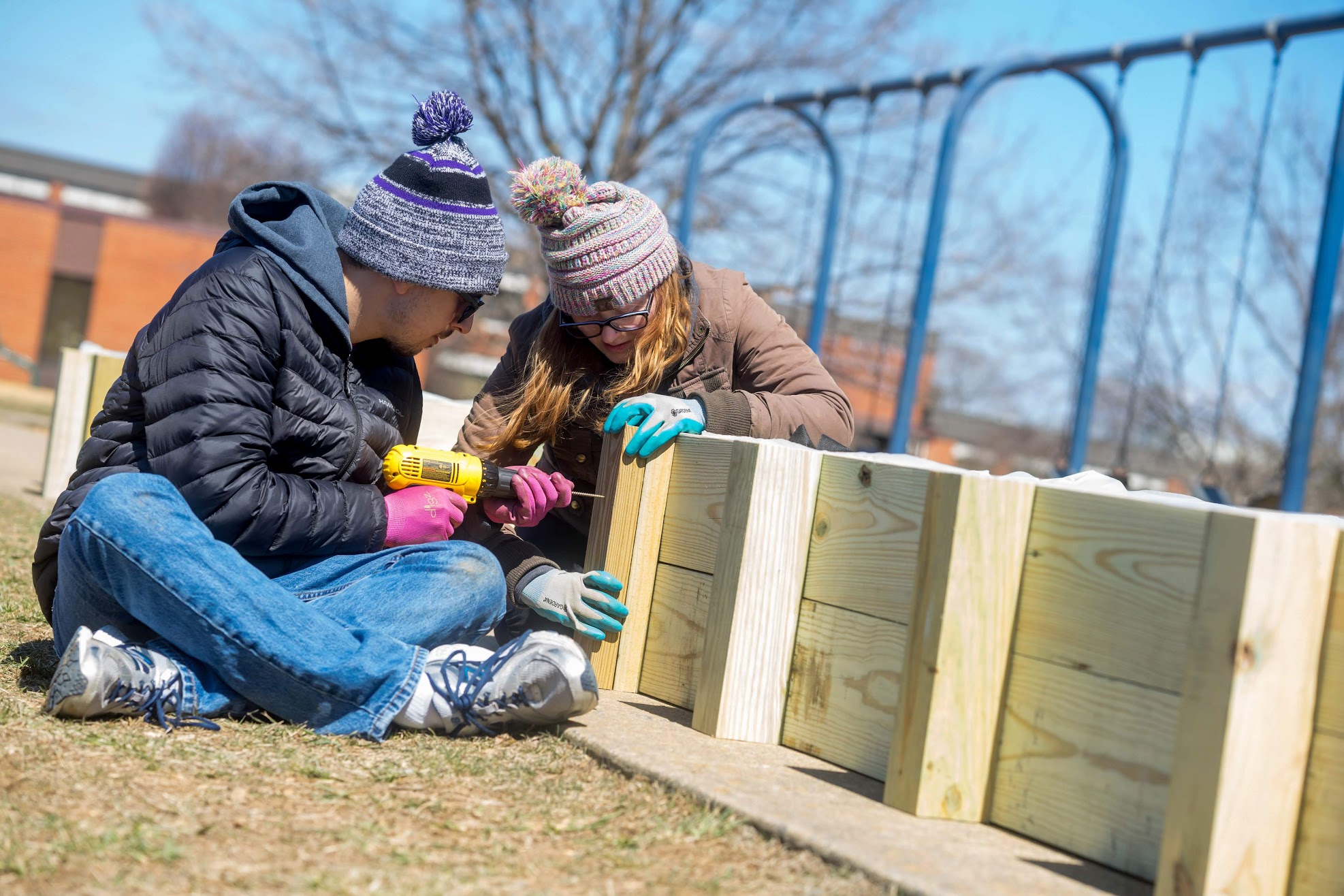
Preparing students for Community Engaged Learning (CEL) increases the likelihood of positive outcomes for all stakeholders. Prepared students are also less likely to cause unintentional harm when engaging with the community. CEVC recommends the following steps during the first 3 weeks of the course:
- Define CEL on your syllabus and convey its importance to the course by tying it to the specific discipline and field of study. Outline expectations, learning outcomes, and community engagement outcomes.
- Schedule a presentation. CEVC full-time and student staff will present in person or online to your class to prepare students for ethical engagement in the community. Typically, as part of the presentation, we guide students to the Volunteer NOW website to begin pursuing opportunities, although we tailor the presentation to your preferences.
- Engage students in dialogue and consideration about the community in which they will be serving, relevant social concerns, and the ways in which they will relate to the community.
Commitment and Expectations
Before being connected to a community partner, JMU students must acknowledge and agree to comply with the expectations outlined in CEVC’s Steps to Successful Community Engagement. Students will be prompted to sign this commitment form when creating a Volunteer NOW profile. Reviewing these steps during class and adding specific guidelines for your community partner(s) is beneficial if time allows. Revisit expectations as necessary throughout the semester.
Logistical Considerations
Since CEL design can vary widely, it is important to consider what type of preparation is needed and which activities will be the responsibility of the faculty member, CEVC, students or community partners. Some of these considerations may include:
- When will students begin and conclude their engagement?
- How many students will/can connect with each community partner?
- What days and times are available with each community partner?
- Is there a certain number of hours students are expected to serve?
- Will students be working in groups?
- Transportation? Parking?
- What entrance should students use?
- What dress code should students adhere to?
- What requirement(s) do students need to complete before starting (i.e., fingerprinting, background check, TB test, vaccines, paperwork, etc.)?
- What types of orientation occur prior to service?
- Do the students need training specific to their role?
- When/where will the training take place?
- How will students be prepared to respectfully engage with the community? Please note, CEVC can facilitate pre-reflection and/or share resources to prepare students for the following considerations:
- Mission, history, background, clientele, etc. of organization
- Local community information
- Social issue education
- Professional, personal, and cultural humility
- Issues of racial inequality
- Power and privilege dynamics
- Students’ identities and backgrounds influencing attitudes, behaviors, expectations, and assumptions
- Confidentiality protocol, electronic device etiquette, ethical photography
- Utilizing a strengths-based approach to address community needs
- Regarding community partners as experts and co-educators
- Ensuring dignity and respect for all involved
- What type of oversight will be provided by the community partner?
- Who will supervise the students? Is there a backup supervisor?
- How will the project be monitored? If a certain number of hours are expected, how will these be tracked?
- What type of oversight will be provided by the faculty member?
- What are the preferred titles, names and pronouns for supervisors and/or others with whom students may interact?
- What is the confidentiality protocol?
- Are there guidelines or policies for electronic device etiquette and ethical photography?
- What language should students use? Avoid?
- How should students and faculty contact the supervisor?
- How should students communicate that they will be absent or late?
- How should community partner(s) contact the faculty member?
- What is the protocol for discussing any concerns?
- What will follow-up and check-ins look like during the semester?
Classroom Resources
- Learning Through Serving, A Student Guidebook for S-L and Civic Engagement Across Academic Disciplines and Cultural Communities (Cress, 2013)
- - Chapter 1, What are Service-Learning and Civic Engagement?
- Difficult Stories: Service-Learning, Race, Class, and Whiteness (Green, 2003)
- How Can I Help?: Stories and Reflections on Service (Dass & Gorman, 1985)
- Identifying Community Assets and Resources (Community Toolbox online, University of Kansas)
- Sit Down, Be Quiet, Pay Attention (Sigmon, 1995)
- The Impossible Will Take A Little While, Perseverance and Hope in Challenging Times (Loeb, 2014)
- - Excerpts
- What We Don’t Talk About When We Don’t Talk About Service (Davis, 2006)
- Student Companion to Community Engaged Learning (Donahue & Plaxton-Moore)
- - Chapter 1. Imperatives: Why We Do Community Engaged Learning
- Whatever It Takes (Tough, 2009)
- - Chapter 1. The Lottery
- Why “Servanthood” Is Bad (McKnight, 1989)
